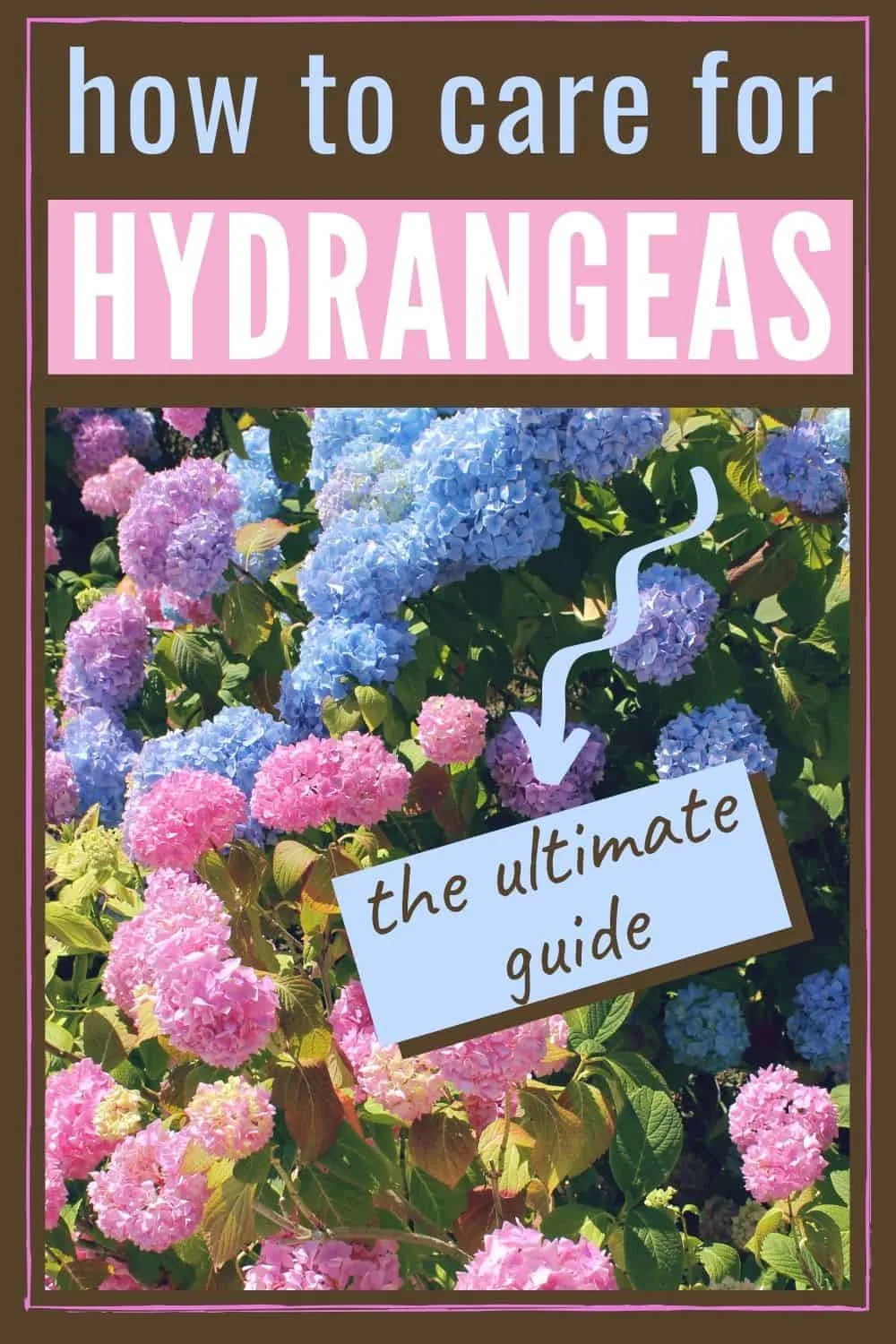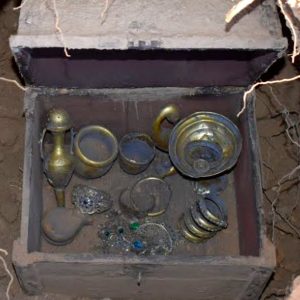The large, showy globes of the hydrangea make it a popular shrub across the U.S. In addition to lush foliage and stunning flowers, this plant is also remarkably easy to care for. Want startling blue, hot pink, or deep purple blooms on your bush? Simply change the acidity of the soil! This article will not only teach you how to care for hydrangeas but also how to propagate them and even change the color of the flowers.
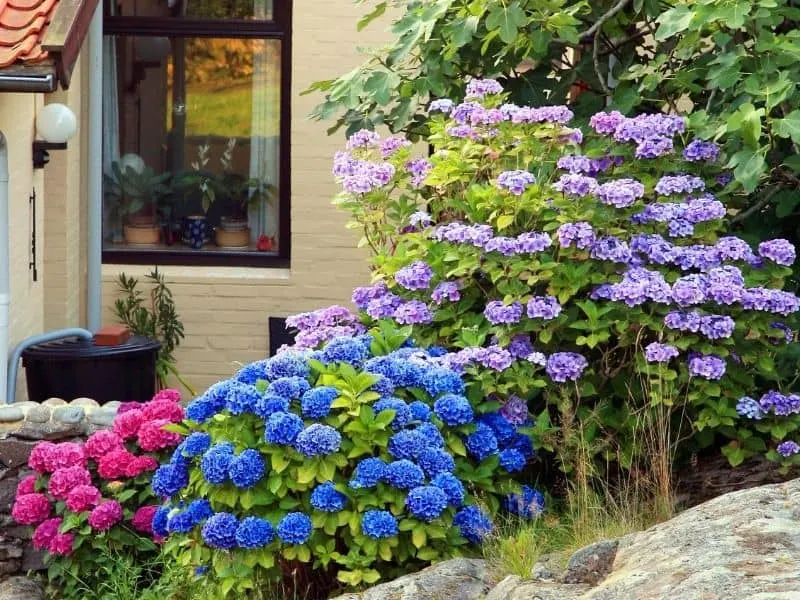
Three of the most common species of hydrangeas include French hydrangea (Hydrangea macrophylla), panicle hydrangea (H. paniculata), and oakleaf hydrangea (H. quercifolia). Perhaps the most popular, French hydrangeas have either “mop heads” of round, dense flowers or more subtle and elegant lace caps.
Busy bee pollinating a purple hydrangea flower
While panicle hydrangeas keep their showy white flowers longer, their color cannot be changed. They are the most cold-hardy and grow quite large, to the point where they can be trained as a large tree.
Finally, the native oakleaf hydrangea has leaves reminiscent of, well, oak leaves and cones of white flowers that last for months.
With so many different types of hydrangeas, keep in mind that the specific care requirements for each may vary slightly. Oh, and let’s not forget the beautiful hydrangea trees you could shape yourself.
What You’ll Be Needing:
Heavenly Hydrangeas: A Practical Guide for the Home Gardener
A Practical Guide for hydrangea care
Garden pots
Use this to transfer Hydrangea cuttings after growing their roots in water
Luster Leaf 1601 Rapitest Test Kit
Use this to test your soil’s pH levels
Penny Mac Hydrangea
A Hydrangea variety that does not need pruning
Oakleaf Hydrangea
A Hydrangea variety that can bloom on both old and new wood
Smooth Hydrangea
A Hydrangea variety that needs more pruning to avoid overgrowth
Panicle Hydrangea
A Hydrangea variety that needs pruning to avoid overgrowth
Hydrangea Fertilizers
Use this to help your Hydrangea grow healthy
Where to grow hydrangeas
Hydrangeas are happiest in partial shade and fertile, well-draining soil. Although they will tolerate full direct sun, try to place them in a location where they will at least receive some afternoon shade to protect them from extreme heat, which they do not like.
Tips on growing hydrangeas
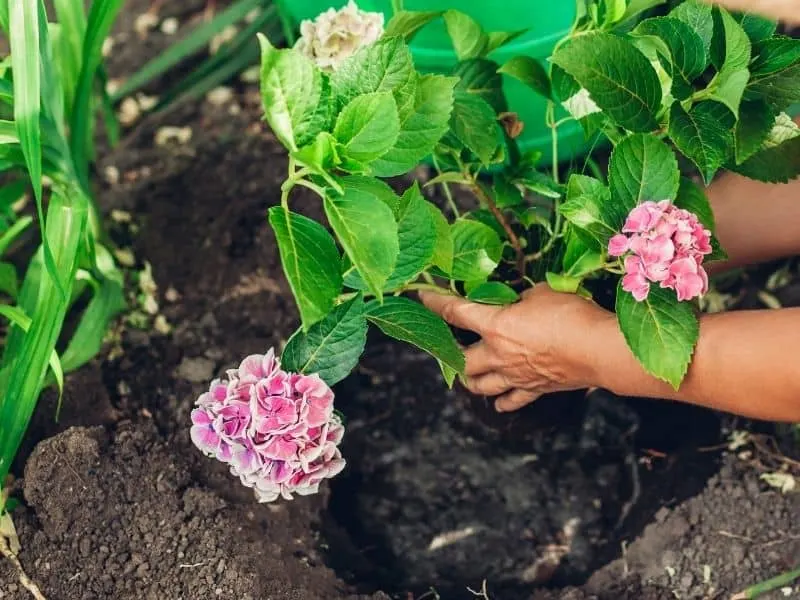
Keep the soil moist, but not wet. A deep watering at least once a week, especially during dry weather, is ideal, and adding a thick layer of mulch will help keep the soil moist.
Hydrangeas may also benefit from a boost of fertilizer once or twice a year, during the spring and summer growing period. Choose the fertilizer carefully, as it can change the pH of the soil and thus the color of the hydrangea blossoms, and avoid over-feeding.
If you would like to move your hydrangea, transplanting is quite easy. Prepare the new site first, then take care to dig up the whole root ball and immediately replant it.
For best results, transplanting should only be done during dormancy, in the fall or winter.
When should hydrangeas be pruned?
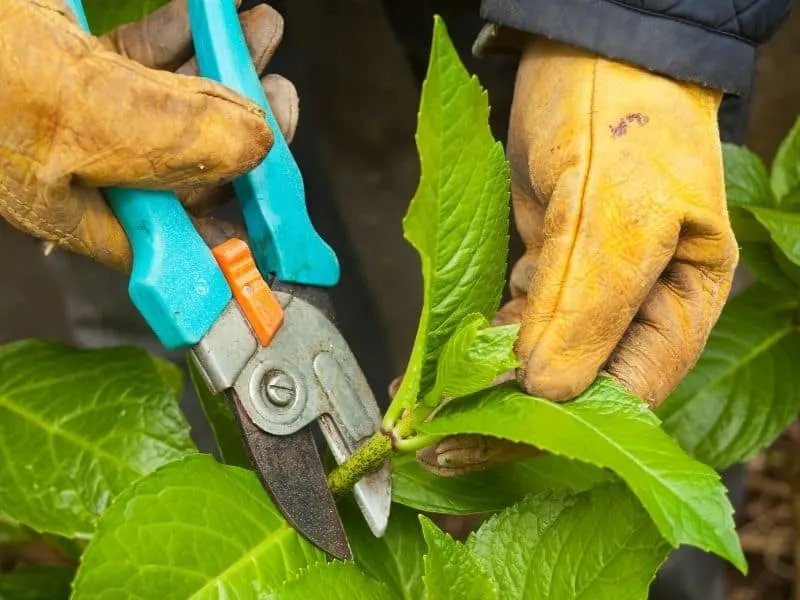
Typically, hydrangeas require very little pruning.
Not all of these shrubs should be pruned at the same time. The most important thing about cutting back hydrangeas is to know if your particular type of hydrangea blooms on new or old wood.
The hydrangeas blooming on old wood should only be pruned after flowering, while those blooming on new wood should be pruned late in the fall or before waking up in the spring.
There are three main reasons to prune a hydrangea:
- To remove dead branches and spent blooms. This should be done every year.
- To revitalize a plant five years old or older. Cut about a third of the older, living stems all the way to the ground.
- To trim a plant that has grown too large. Try to plant new hydrangeas only where they will have plenty of space.
Prune French and oakleaf hydrangeas in mid to late summer, after the main blooming period but before the plants produce new buds. July is usually a good time, as the buds tend to set between August and October.
Some people prefer to prune oakleaf hydrangeas in early spring so they can enjoy the dried flowers through the winter; if you choose this route, be careful to cut above the first set of healthy buds on each branch, or simply deadhead.
Panicle and smooth (H. arborescens) hydrangeas can be pruned in fall, winter, or early spring before they prepare to bloom in the spring.
How to change the color of hydrangeas
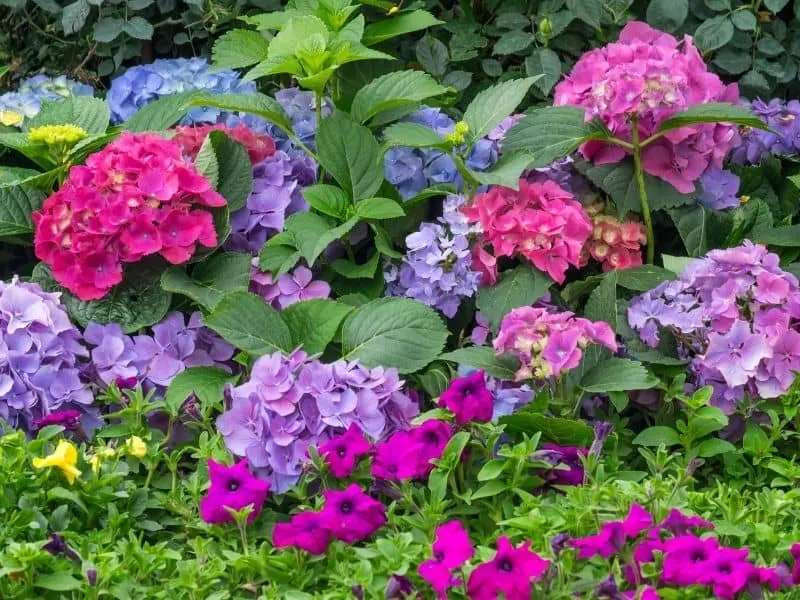
First, there are a few limitations to changing the color of a hydrangea: you will have the most control over potted hydrangeas, though you can also affect the color of those planted in the ground.
Additionally, white hydrangeas cannot be coerced to change color. They may become pink as they age, but there is no guarantee that will happen. It is easiest to change pink to blue.
When a hydrangea is transplanted, it may change color on its own in response to the change in the soil. Wait about two years after planting a hydrangea before attempting to change its color. Once you begin amending the soil, it may take a few weeks or even a few months for the color to change, so be prepared to wait a bit.
Turning a hydrangea blue involves increasing aluminum uptake while turning it pink requires reducing aluminum. This is most commonly done by changing the pH of the soil, as hydrangeas absorb aluminum more easily at lower pH levels. Purple hydrangeas fall somewhere in the middle.
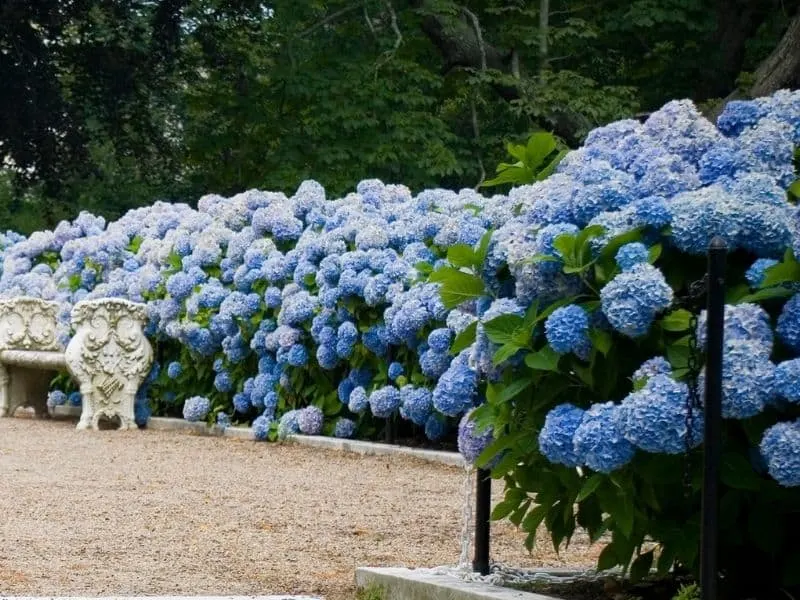
For blue flowers, add aluminum sulfate to the soil, and test to ensure the pH hovers around 5.2 to 5.5. The aluminum sulfate should reduce the pH, but if it does not lower it sufficiently, try adding organic matter, like coffee grounds, fruit peels, or grass clippings.
If you fertilize your hydrangea, choose a fertilizer low in phosphorus and high in potassium, such as 25-5-30.
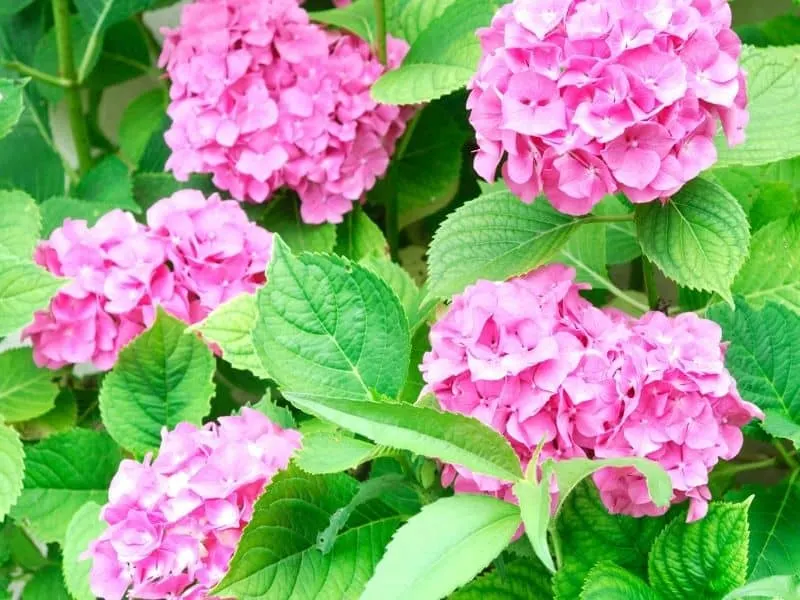
Pink, as noted above, is a bit trickier, since you have to prevent the hydrangea from taking up aluminum. Try raising the pH by adding dolomitic lime a few times a year, aiming for 6.0 to 6.2. Additionally, feed with a fertilizer that contains more phosphorus, such as a 25-10-10 ratio.
If your soil contains significant amounts of aluminum and your hydrangeas tend toward blue, growing them in pots will be your best bet for pink blooms.
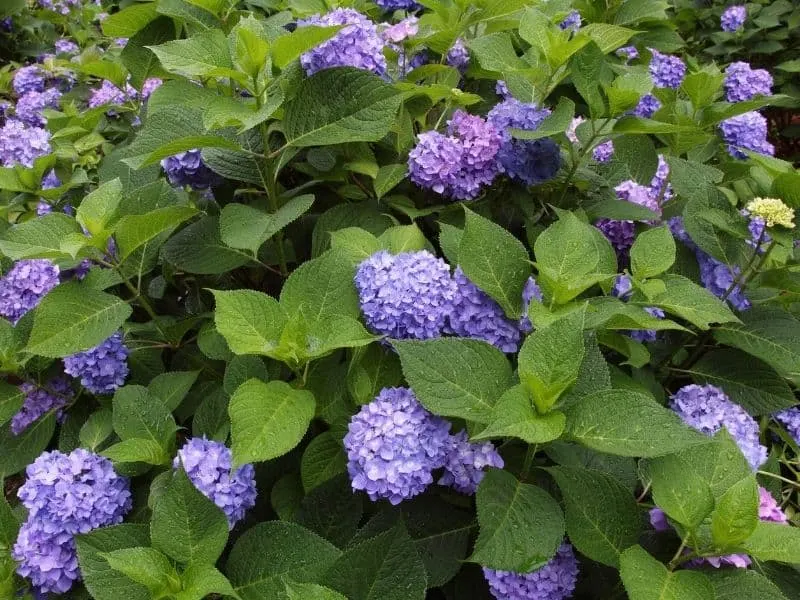
Since the conditions for purple hydrangeas fall in the middle, test your soil pH, and amend as necessary to achieve a level between 5.5 and 6.0.
How to grow hydrangeas from cuttings
Look for a branch of new growth but no flowers: the leaves will be a lighter shade of green and the stem less rigid. Cut the branch about four to six inches from the tip, making sure to include three to four pairs of leaves. Remove all but the top two pairs of leaves, and if desired, dust the bottom portion of the stem with a rooting hormone (this is what I use).
Fill a small pot with moistened sterile potting mix, vermiculite, or sand, and insert the cutting into the soil up to just below the first set of leaves.
To help keep the soil moist, cover the plant loosely with a plastic bag, held up with sticks so it doesn’t touch the leaves, or place a clear plastic cup or another container over it. Place the cutting in a warm, sheltered area with bright but indirect light, and water only when the surface of the soil begins to feel dry. Depending on the temperature and humidity, the cutting should root in one to three weeks.
When is the best time to plant hydrangeas?
Plant hydrangeas after the last frost in spring but before the full heat of summer or in fall before the first frost. Overwintering cuttings can be difficult without a greenhouse, so early summer is the best time to start them so they can be planted out in the fall.
Common hydrangea problems and FAQs
Why are my hydrangeas not blooming?
A disappointing lack of blooms can happen for several reasons. A common one is improper pruning; if you cut back the new buds, there won’t be any, or many, left to bloom. Most likely, your big beautiful blooms will come back next year! Other causes include a late spring freeze, too much fertilizer, too much shade, or hungry deer (here’s how to stop deer from eating hydrangeas).
What happens if you don’t prune or deadhead hydrangeas?
Not pruning a hydrangea likely won’t have any ill effects, though deadheading is recommended to keep the bush looking fresh, healthy, and full of big blossoms. If you don’t deadhead, the hydrangea will be covered in spent blossoms and begin to put energy toward seed production rather than flowers.
Will hydrangeas grow back if cut down?
Yes, hydrangeas will typically grow back if cut down to the ground. Although this practice may rejuvenate an old, neglected, or damaged hydrangea, cutting back the entire plant every year will result in smaller, weaker stems. Instead, try cutting just a third of the branches back to the ground. See the pruning section above for more details.
Are coffee grounds good for hydrangeas? What about eggshells or banana peels?
Adding organic matter like coffee grounds or fruit peels will help lower the pH of the soil and encourage blue flowers (see “How to change the color” above). Adding eggshells will provide the plants with calcium, making them stronger, as well as neutralize the pH of the soil, possibly resulting in purple flowers. However, it’s important to crush the eggshells into a powder first, or they won’t decompose.
Big, beautiful blossoms
When grown in the proper conditions, hydrangeas will happily provide big, beautiful blossoms with minimal care. A little extra effort can result in extra-showy bushes, and even if you make a mistake or run into problems, these forgiving plants will still reward you with stunning flowers the following year.
